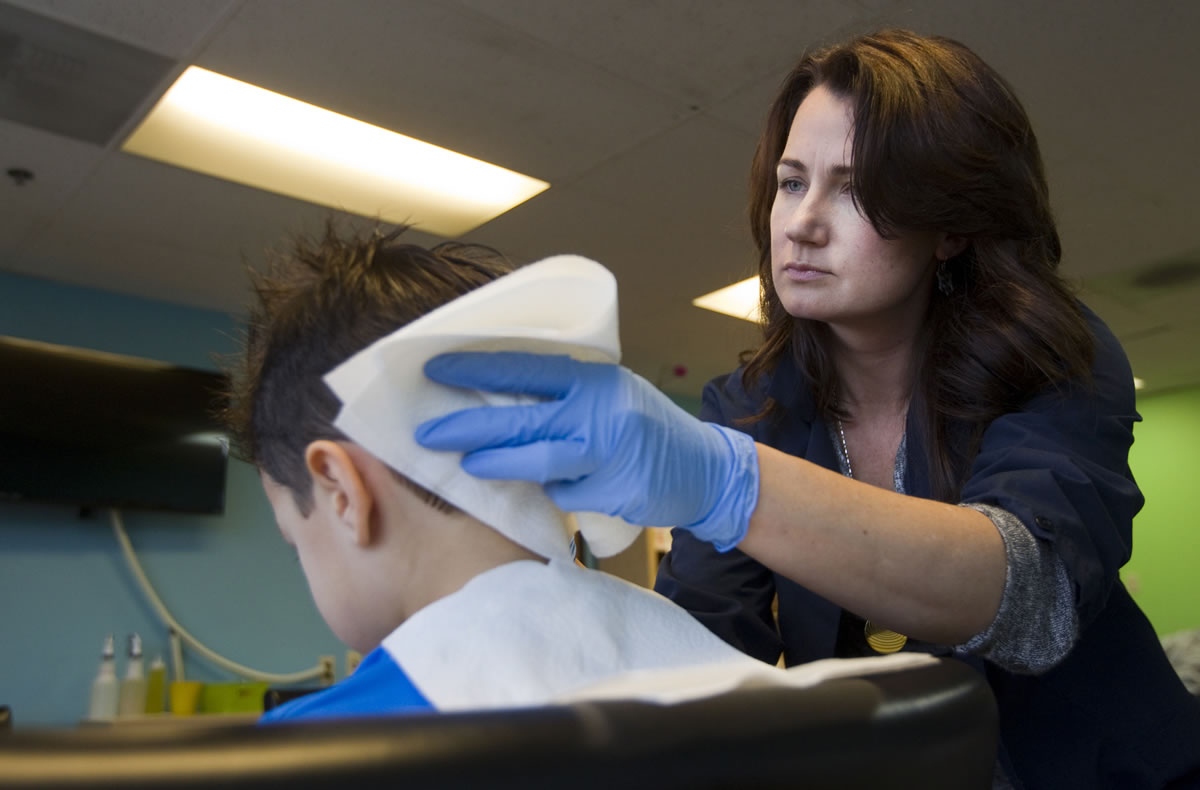Here’s one itch that requires more than a scratch to relieve: head lice.
These tiny bugs — adult lice are no bigger than a sesame seed — can create a big headache for parents. The bugs infest the scalps of 6 million to 12 million U.S. children ages 3 to 11 every year, estimates the Centers for Disease Control and Prevention.
And while back-to-school time seems to yield more lice discoveries, the bugs can take up residence on human scalps any time of the year.
“There’s always lice,” said Nancy Gordon, owner of Lice Knowing You, a lice -removal company with six clinics in the Northwest, including one in Portland.
Head lice infestations may cause stress levels to rise, but treatment options — both professional and do-it-yourself — are available, Gordon said.
“Lice is not the worst thing in the world,” she said. “It’s no different than colds or the flu. It’s just a bug you can see versus one you cannot.”
Head lice are parasitic insects found almost exclusively on the scalp, particularly behind the ears and near the hairline at the back of the head. Lice feed on human blood but are not known to spread disease, according to the CDC.
Adult lice are tan or grayish in color and crawl quickly. They use hooklike claws on the end of each of their six legs to hold tightly onto the hair, according to the CDC.
Adult lice can live about 30 days on a person’s head, but will die within one or two days if they fall off the person, according to the CDC.
Adult female lice can lay about six nits, or eggs, per day. The nits, which are oval-shaped and appear to be yellowish or white in color, are laid near the base of the hair shaft (about 1/4 inch from the scalp). They take about eight days to hatch, according to the CDC.
Lice infestations are most common among young children in day cares and elementary schools and their families, according to the CDC. Many of Clark County’s school districts have procedures in place that allow students with lice infestations to remain in school.
This spring, Evergreen Public Schools replaced its no-nit policy with a more lenient procedure. Students determined to have head lice and/or nits are sent home at the end of the school day with a letter notifying parents of the infestation and providing information about treatment. Students are allowed to return to school the next day, regardless of whether they’ve received treatment, said Gail Spolar, spokeswoman for the district.
The Vancouver, Battle Ground and Camas school districts have had similar non-exclusion procedures in place for several years.
Dr. Alan Melnick, Clark County Public Health’s administrator/health officer, said he supports the district procedures.
“No-nit policies don’t make sense,” Melnick said.
No-nit policies require kids with lice nits be sent home from school and remain home until they are nit-free. But declaring a student nit-free can be problematic, Melnick said.
A student may have received treatment but still have nits that are no longer viable or casings of hatched nits attached to his or her hair shafts. The school official checking the child may see the dead eggs or casings and determine the student isn’t nit-free, Melnick said.
In addition, nits that are cemented to the hair aren’t likely to transfer to other people, and adult lice don’t jump or fly. A person most often gets lice after direct head-to-head contact with someone who has an infestation, Melnick said, not by simply standing or sitting by someone with lice.
It’s also uncommon for lice to be spread by contact with clothing, even hats and jackets, or other personal items, including combs and brushes, according to the CDC.
“While head lice are a nuisance and people don’t like things crawling on their scalps, it’s not a disease and they don’t spread disease,” Melnick said.
Health officials do recommend treatment for head lice.
The CDC recommends the use of over-the-counter or prescription lice medicine. After following directions on the box for applying and rinsing the medicine, the CDC recommends using a fine-tooth nit comb to remove lice and nits from hair shafts.
Gordon, of Lice Knowing You, recommends parents make checking for head lice a regular practice. Her motto is “once a week, sneak a peek.”
“Wet checks” are the most effective way to check for lice, Gordon said. Wet checks are when the hair is dampened with conditioner and then combed with a lice comb. Everything from the comb is then wiped onto a paper towel, making it easier to decipher between nits and dandruff or dry skin, Gordon said.
“Lice are not as obvious as you would think,” she said.




